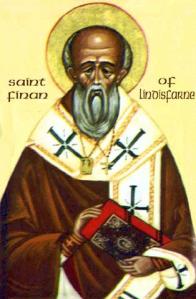
The people that were living in the Isles of Great Britain between 1 A.D. and 8th century AD were a dark skinned people who had cognizance of the bible, the Torah and its messages.
Their roots came from Egypt, Ethiopia and North East Africa. The Hebrew Israelite movement in United States indicate that those people were ancient Hebrews.
I have seen description of those people as Moors, or Mors.
It is undisputed that there were brown skin, and had curly hair. The earliest Roman soldiers who came into the Islands with Ceasar almost 2000 years ago confirm as much. Roman General Tacitus wrote about them in his book. They were called the Silures. Some others were called the Picts. There were also the dark skinned Celts, and old Iberians.
The Chronicles and Annals of the Irish, Scottish and English kings all give testimony about the dark brown people of early Britain. Some say that they were the Black Hebrew Israelites. They founded the base of Europe, and gave it the culture which it still practices today.
The Church history has this story buried within its arcane languages.
The older paintings found in British churches, especially in Ireland and Wales, unashamedly confess to their dark past. A past they would want to deny now.
A past that is yet confirmed by archaeological digs in Britain.
Here I will present yet another one of those first black Europeans, the first Black British, who were aboriginal to the land before the appearance of the barbarian tribes who today call themselves “white people”.
Saint Finan was one such Black Irish. He worked with the Roman Catholic Church which was ruled at that time by a predominantly Moorish clergy.
He worked against the Irish Church which was also established and run by the Black Irish people of that time. On this website one can find paintings and images of many such Black Irish Saints, for instance Saint Aidan, Saint Columba, Saint Deniol.
Black man fighting black man, for so long. In the end the both factions lost out and the modern Europeans, the so-called white people took over.
Below I reproduce a short narrative about Saint Finan that I found on the web:
Saint Finan was an Irish monk who lived in the 7th century AD. Although I could not verify this particular piece of information, I was told that St. Finan came from the village of Finnian in Scotland. I was able to verify that St. Finan was trained at one of the great schools of religious learning on the island of Iona, off the coast of Scotland. In 653, St. Finan was chosen by the Columbian monks to succeed the great St. Aidan (635-651) as Bishop of Lindisfarne.
Lindisfarne is an island some two miles off the north eastern coast of Scotland. Lindisfarne became famous for being the mother-church and religious center of Northumbria.
St. Finan is described as being an able ruler who reconstructed the monastery at Lindisfarne in what was described as “the Irish fashion”, employing “hewn oak, with an outer covering of reeds”.
St. Finan contributed to several religious centers, including St. Mary’s at the mouth of the River Tyne, Gilling, a monastery on the site where King Oswin had been murdered, and the great Abbey of Whitby.
St. Finan was described by Aberdeen as “a man of venerable life, a bishop of great sanctity, an eloquent teacher of the unbelieving races, remarkable for his training in virtue and his liberal education, surpassing all his equals in every manner of knowledge as well as in circumspection and prudence, but chiefly devoting himself to good works and presenting in his live, a most apt example of virtue”
In addition to his duties at Lindisfarne, St. Finan was primarily a missionary, spreading the Catholic Faith the world over. He was particularly famed for having converted Peada, the son of Penda and King of the Middle Angles, along with his “Nobles and Thanes”. St. Finan then gave Peada four priests, including Diumma, whom he consecrated Bishop of Middle Angles and Mercia, under King Oswy.
Unfortunately, not all of St. Finan’s story is untarnished. One of his foremost foundations, the Abbey of Whitby, was the scene of a famous controversy which resulted in the withdrawal of all the Irish Monks from Lindisfarne. It seems that there was a discrepancy between the Irish and Roman Catholics over exactly when Easter was to be celebrated. On one occasion, King Oswy and his Court were celebrating a feast on Easter Sunday with St. Finan, while on the same day Queen Eanfled and her attendants were still fasting and celebrating Palm Sunday. This angered the Roman Catholics so that the Irish Monks were forced to abandon their monastery on Lindisfarne.
Today, there are several tributes to St. Finan throughout Ireland including Saint Finan’s Bay at the tip of the Iveraugh Peninsula in County Kerry, and St. Finan’s Hospital in Limerick (which is a mental institution !!).
It is unclear from this point what became of Saint Finan. Whether our Finan family is actually descendant of him, or if the connection is only in name will probably never be known for sure.

